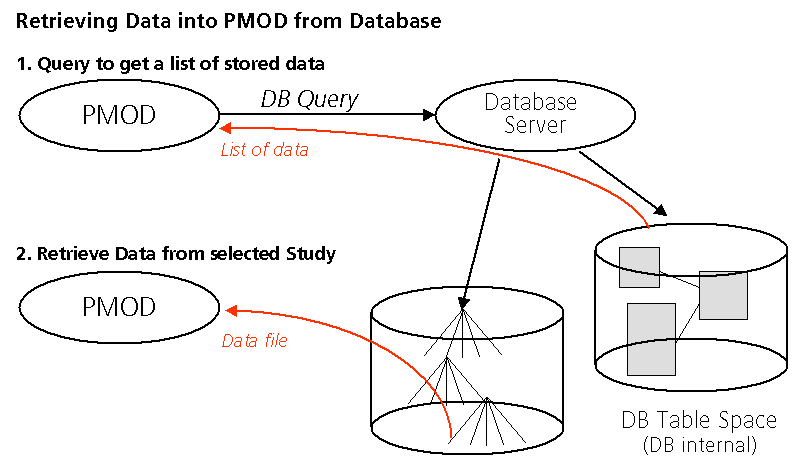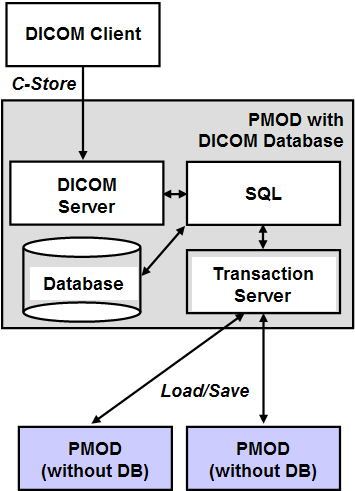DICOM Operations using a Database
If the database is configured, PMOD can save images and all other information types such as VOIs, transformations, kinetic modeling files etc. in the same manner as described for the DICOM objects.
A Save operation sends a request to the database containing all relevant meta-information about the data (patient name, study, series, data type, etc) and the data itself. The database server then saves the data into a directory structure and adds the access information into its tables.

When Load operations are performed, this access information is presented to the user in a way which allows performing database searches, and if a data set is selected, it can be loaded into the PMOD tool using the internal access information. 
Benefits of Using the Database
There are several benefits resulting from the use of the PMOD database:
Database Engines
The PMOD database functionality is based on an external SQL database engine. Two such databases are currently supported:
In this section it is assumed that the database engine is working properly.
Database Access Types
There are two different types of databases in PMOD:
The transaction server concept is most useful in an environment of multiple PMOD installations. On one of the PMOD installations, the PMOD JDBC databases are created. On the same system, the PMOD DICOM server is started, and saves the received images in one of the databases. All other PMOD installations access the databases just through the transaction server as illustrated below.

Note: After the installation of Pmod3.9, the Pmod database and the DbSvr transaction server for publishing this database are available. The Pmod database contains various example data if the example database was selected for installation. This database resides within the PMOD installation directory. Please create a new database for your productive work which resides on a disk which is regularly backed up.